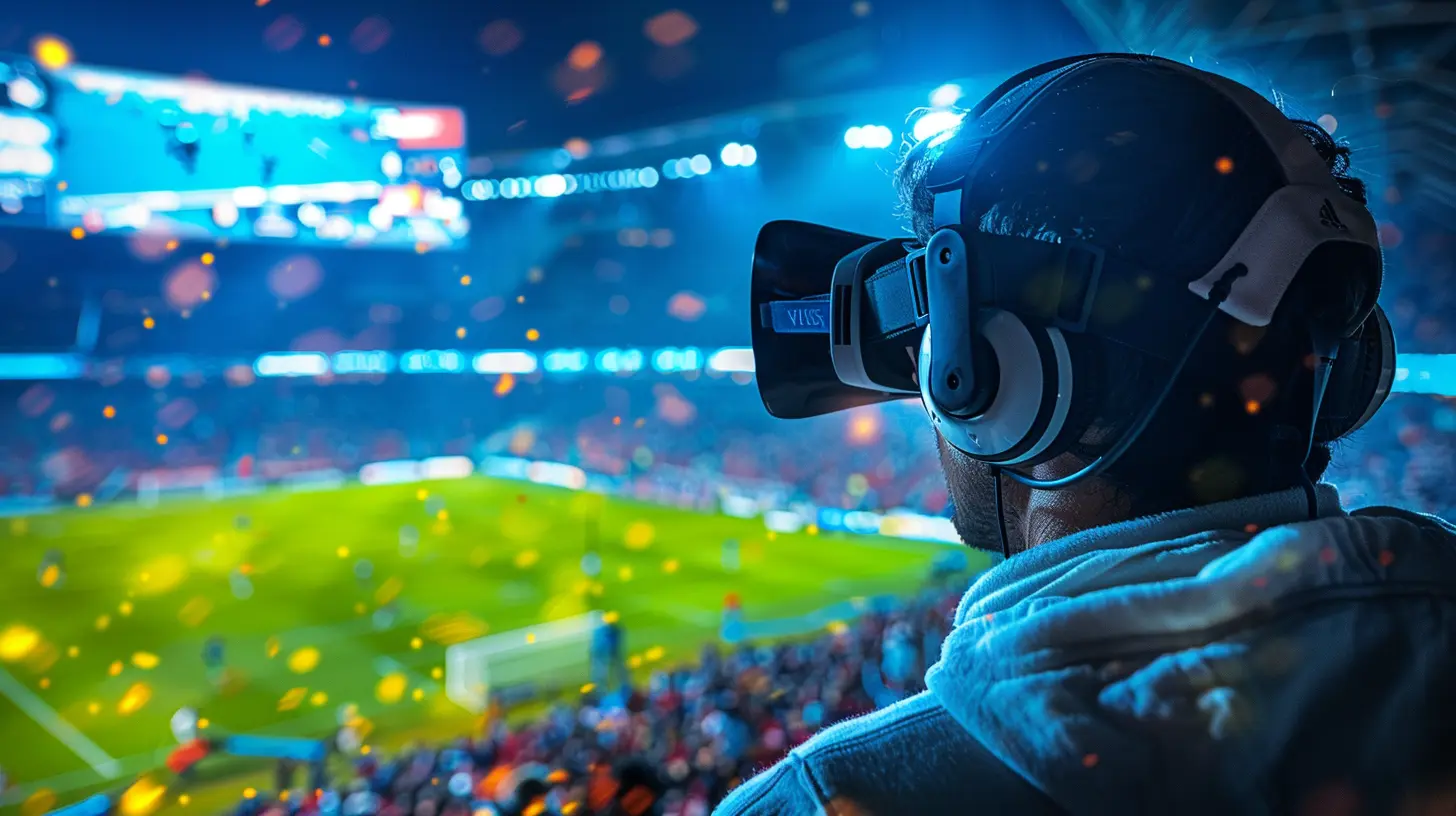The Future of Sponsorships in Virtual Sports
7 July 2025
Alright, let's talk about something that's been quietly sneaking up on us while we’ve been glued to our screens—virtual sports. No, not esports (though they’re close cousins). I’m talking about virtual sports—AI-driven, computer-simulated competitions modeled after real-world sports. Think virtual football matches, simulated horse races, and even digital versions of NBA showdowns. Now add sponsorships into the mix, and we’ve got a game-changer on our hands.
In this piece, we’re diving headfirst into the bold and booming world of sponsorship in virtual sports. We’re not just scratching the surface. Nope. We’re going full throttle—examining how brands are staking their claim, why it matters, and where this wild ride is heading next.

What Exactly Are Virtual Sports?
Before we zoom into the future, let’s make sure we’re on the same page.Virtual sports are digital simulations of traditional sports. They’re powered by algorithms, fueled by big data, and they run 24/7, regardless of weather or pandemics. You can bet on them. Watch them. Even root for digital athletes. They’re big in online betting platforms and are gaining traction worldwide.
Imagine a soccer match playing out completely through AI. No messy injuries, no surprise game cancellations, just pure, uninterrupted sport. It's fast, automated, and oddly addictive.
And here’s where it gets juicy for brands.

Sponsorships Are Already Knocking on the Door
Sponsorship in traditional sports is a beast—jersey logos, stadium naming rights, halftime ads, the whole nine yards. But in virtual sports? That beast is evolving. And it's hungry.Why? Because virtual sports offer something traditional sports can’t: total control. Brands aren’t just sponsoring a team. They can literally create a digital stadium, plaster their logo across the screen, and even insert ads directly into the gameplay.
It’s like going from being a billboard on the highway to being the highway itself.

The Rise of Brand Integration in Simulated Environments
Let’s face it—nobody likes interruptive ads. We skip YouTube ads, block pop-ups, and tune out commercials. But what if the ad isn’t interrupting your experience, but is actually part of it?Enter: seamless brand integration.
Virtual sports environments offer fertile ground for contextual, in-game sponsorships. Picture a virtual tennis match played on a court branded by Nike. Or a simulated soccer game where Gatorade hydrates the digital players. It's not just subtle branding—it's rubbing shoulders with the core experience.
And the best part? These sponsorships are customizable, scalable, and trackable. Every click, view, and user interaction is measured down to the millisecond.

AI-Generated Sponsorship Placements? That’s Not Sci-Fi Anymore
Here's the crazy part—AI is now smart enough to place ads at the most optimal moments within a virtual sports game. Based on user data and behavior, the system knows when you're most likely to notice a banner or respond to a brand message.It's like having a marketing team inside your brain. Creepy? Maybe. Effective? Absolutely.
Advertisers are salivating over this because it turns guesswork into precision.
The Evolution of Fan Engagement
You know how fans go absolutely bonkers over their favorite teams? That same fire is starting to ignite in the virtual arena. And with that comes opportunities for branded fan experiences.We're talking:
- Virtual fan zones sponsored by Coca-Cola
- Branded team jerseys you can customize
- Special in-game "home stadiums" sponsored by the likes of Adidas or Red Bull
When fans emotionally invest in virtual teams and leagues, brands step in to fuel that emotional connection.
Because let’s be real—if you love a team, you’re probably going to drink the drink they drink, wear the gear they wear, and mimic their moves. It's tribal. And sponsors are cashing in.
Betting, Blockchain, and Big Bucks
Let’s not ignore the elephant in the room—online betting.Virtual sports are huge in the online gambling scene. And where there’s betting, there’s action. Blockchain-based, decentralized betting platforms are emerging, giving bettors full transparency. Sponsors in this space are already making power moves.
Imagine a blockchain-powered horse race, where every horse is backed by a sponsor and every bet is a transaction recorded on-chain. It’s decentralized. It’s transparent. And it’s the future.
This opens doors for fintech sponsors, crypto exchanges, and digital wallets to get front-row seats to a booming economy.
Virtual Celebrities, Digital Athletes & Influencer Sponsorships
Here's where things get a bit Black Mirror.We’re now seeing the rise of virtual athletes—fully simulated sports personalities with fanbases, personalities, and story arcs. They’ve got swag, charisma, and yeah—sponsorship deals. Think AI-generated influencers like Lil Miquela, but in cleats and helmets.
Brands are lining up to partner with these digital athletes because:
- They don't age
- They don’t get injured
- They always say the right things
That’s brand gold, baby.
Expect to see virtual athlete endorsement deals, branded behind-the-scenes content, and maybe even virtual reality meet-and-greets.
Real-Time Customization: The Future of Targeted Sponsorships
This one will blow your mind.Imagine watching a virtual sports match. You’re in London, sipping tea, and you see a Heineken ad. Meanwhile, your buddy in New York watches the same match and sees Budweiser. Same game. Different ads. Tailored to your location, your preferences, your browsing history.
That’s the power of dynamic ad insertion in virtual sports.
It means advertisers can micro-target like never before. It’s personalization at scale. And it’s pure marketing wizardry.
The Metaverse + Virtual Sports = Sponsorship Heaven
Try saying that headline three times fast.But seriously, virtual sports are headed into the metaverse faster than a quarterback on a caffeine bender. We’re talking full-immersion, VR-enabled games inside virtual worlds where fans can attend league matches as avatars, buy digital hot dogs, and wear branded merch.
Sponsors drool over this stuff.
Because now, they’re not just seen—they’re experienced. They can set up branded booths, throw virtual giveaways, or even host halftime shows inside the metaverse. It’s like Coachella meets FIFA, and everyone's invited.
Challenges Ahead (Yeah, It’s Not All Sunshine)
Hold up—before we jump aboard the hype train, let’s hit the brakes.There are challenges ahead for sponsorships in virtual sports. For starters:
- Legal clarity is blurry. Who owns what in a virtual stadium?
- Over-commercialization can kill user experience.
- Ethical concerns around gambling and AI bots are heating up.
Also, while Gen Z might dive in without hesitation, older generations still prefer the smell of real grass and the feel of a real ball game. So there’s a generational divide to bridge.
But if the marketers play their cards right, the opportunities far outweigh the risks.
So, Where Are We Headed?
Let me spell it out for you:🔹 AI-powered sports teams
🔹 Real-time, targeted brand placements
🔹 Metaverse gaming arenas
🔹 Virtual athletes with billion-dollar deals
🔹 Sponsors who live inside the game, not around it
It's not a question of if sponsorship in virtual sports will explode—it’s a question of how soon.
Smart brands are already planting their flags. The rest? They’ll either catch up or get left behind in the digital dust.
Final Whistle
Look, we’re standing at the edge of a digital revolution. The world of virtual sports isn’t coming—it’s already here. And the brands that understand this shift, adapt fast, and integrate authentically will dominate the sponsorship game for years to come.So if you're a marketer, a sports fan, or just someone who’s curious about where the future is headed—one thing’s for sure:
Virtual sports are real business. And sponsorship is its touchdown.
all images in this post were generated using AI tools
Category:
Virtual SportsAuthor:

Ruben McCloud
Discussion
rate this article
1 comments
Elena Russell
As virtual sports gain traction, sponsorships will evolve, leveraging immersive technology and data analytics to engage audiences. Brands must adapt their strategies for authenticity and deeper fan connections in this digital realm.
July 19, 2025 at 2:23 AM

Ruben McCloud
Absolutely! As virtual sports continue to grow, brands need to harness innovative technologies and data insights to create genuine connections with fans, ensuring their sponsorships resonate in this dynamic digital landscape.


